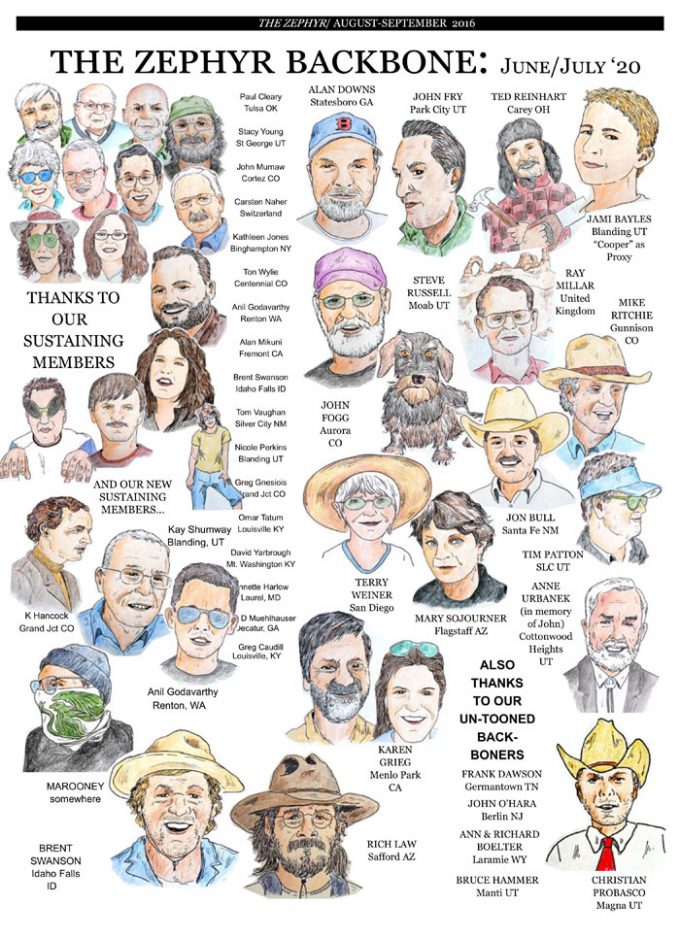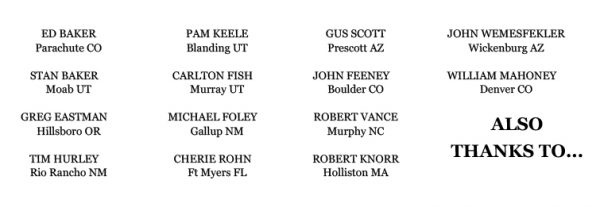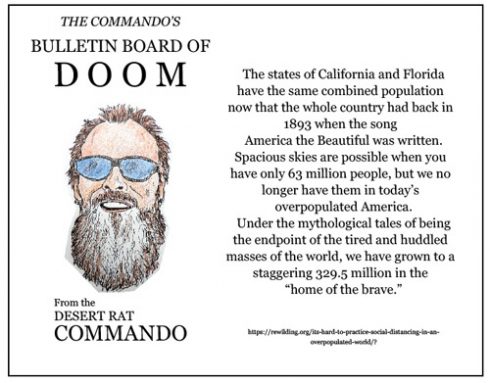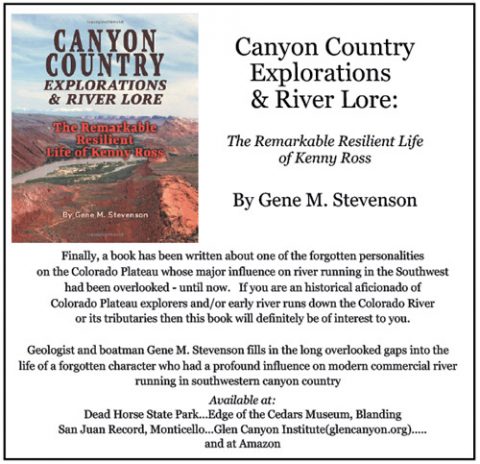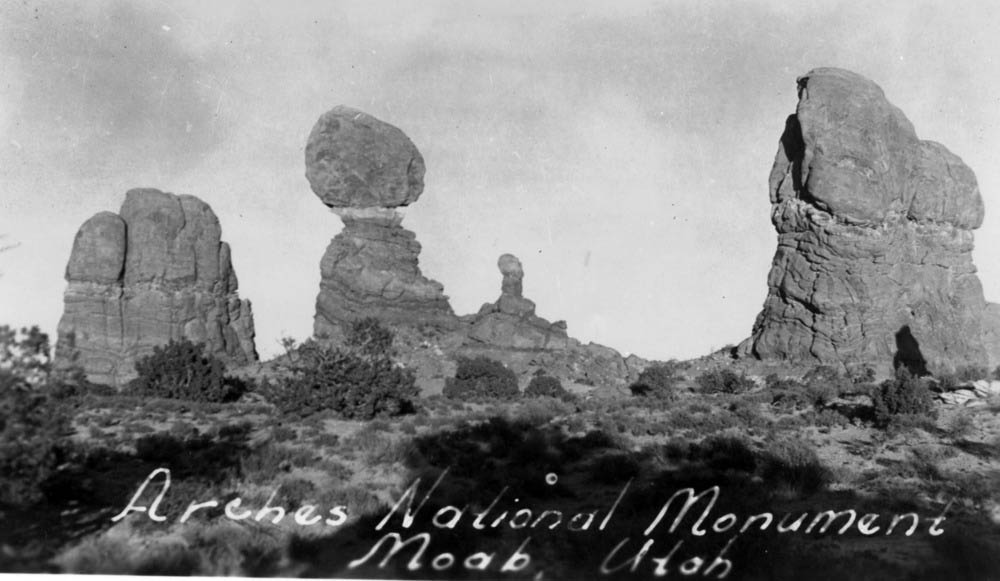
June 23rd, 1941
Mr Hugh M Miller, Superintendent
Southwestern National Monuments
Coolidge, Arizona
Dear Hugh:
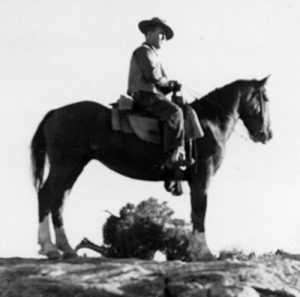
It is hot enough today to fry eggs on the “slickrock”, but there are things to be done so I may as well ignore the heat and get my monthly report on paper. Since the 21st I have been trying to catch a few minutes for the reports in between almost continuous contacts with out-of-state visitors. Travel for the month was more than double that of June, 1940. Just to give you an idea of where our visitors are coming from the travel for Sunday, June 22, consisted of 16 parties with 82 people, registered from 11 different states. Only 2 of the parties were from Utah.
The trip through the monuments with Dr Maxwell was very instructive and extremely well worthwhile from several view points. I have always thought that this area was one of the outstanding outdoor geological laboratories in the nation, and now I am convinced of the fact. Dr. J. LeRoy Kay, Curator of Vertebrate Paleontology at Carnegie Institute, accompanied us on the entire trip, and his technical assistance was of great help to us. I will make a complete report of this trip as soon as I return from the fire school at Bryce Canyon.
By Henry G. Schmidt, custodian
Moab, Utah
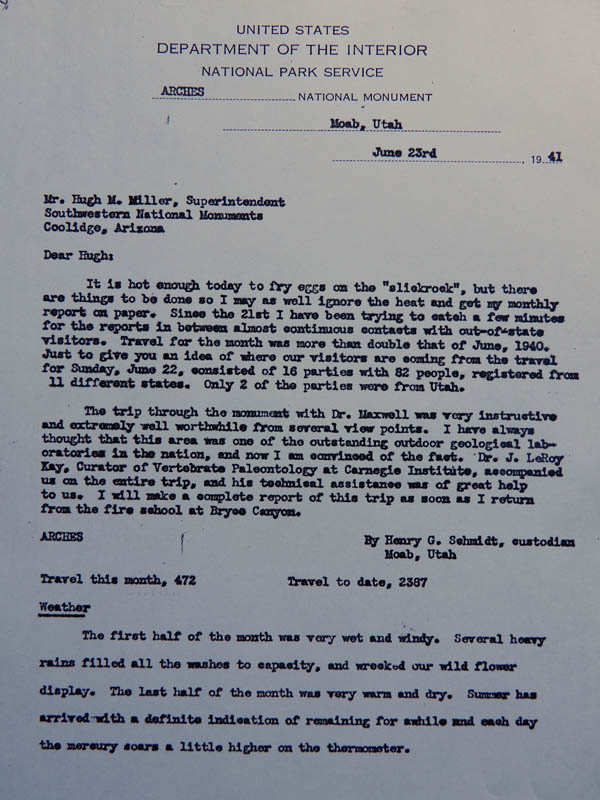
Arches
Travel this month, 472
Travel to date, 2397
Weather
The first half of the month was very wet and windy. Several heavy rains filled all the washes to capacity, and wrecked our wild flower display. The last half of the month was very warm and dry. Summer has arrived with a definite indication of remaining for a while and each day the mercury soars a little higher on the thermometer.
Roads
The Windows Section road was badly washed by the rains during the first part of the month and was closed to travel for three days. Most of the damage was centered in the vicinity of Courthouse Wash crossing, but this damage was repaired by the CCC maintenance crew and the road is now in good condition.
The heavy rains further damaged the road down Salt Valley, many sections of the existing road being entirely washed out. This road is passable but only to experienced desert travelers.
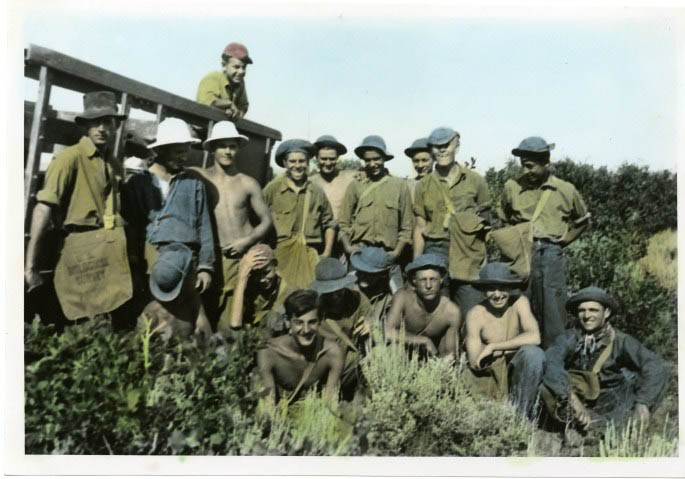
Visitors
Travel to the monument more than doubled over the corresponding month in 1940. California, Colorado and Utah sent us the largest number of visitors with the balance of travel originating in 27 other states.
Twenty-seven parties, with 132 people, were conducted through the Windows Section and 20 parties, with 170 people, were contacted at the Willow Springs Ranger Station or on the entrance road. Two parties with 11 people hiked into the Courthouse Towers section.
Park Service visitors included Dr. Ross Maxwell, Jack Diehl and George Norgard, Santa Fe, New Mexico, and Glenn Boyland and Art Gilmore of Mesa Verde National Park.
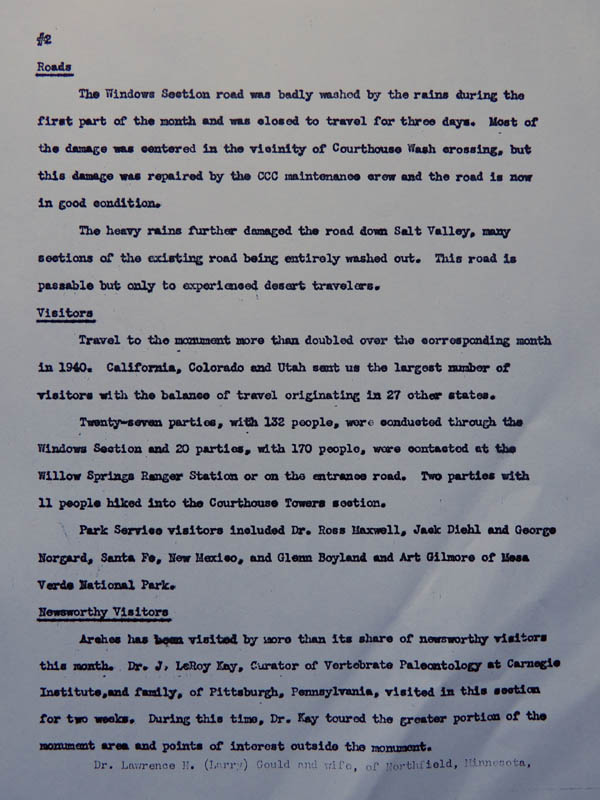
Noteworthy Visitors
Arches has been visited by more than its share of newsworthy visitors this month. Dr. LeRoy Kay, Curator of Vertebrate Paleontology at Carnegie Institute, and family, of Pittsburgh, Pennsylvania, visited in this section for two weeks. During this time, Dr. Kay toured the greater portion of the monument area and points of interest outside the monument.
Dr. Laurence M. (Larry) Gould and wife, of Northfield, Minnesota spent two days re-visiting the Windows section.
Dr. C.L. Hess and daughter, Charlotte, of Bay City, Michigan are now re-visiting the Arches. While on their trip through Arches last summer Dr. Hess made 200 kodachrome slides of the area. He has used them in lectures throughout the state of Michigan during the winter and stated that they were so well received that he returned this summer to complete the photographing of the Arches area.
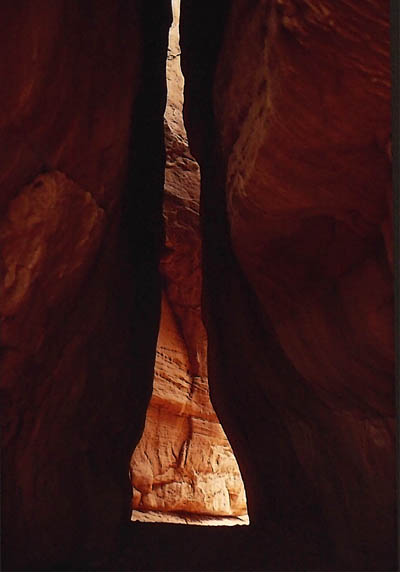
Project Progress for the Month
The maintenance of the Windows Section road was continued to June 18. On that date the company strength of the Arches CCC Camp was cut to a minimum; this project, consequently, was discontinued until the replacements arrive to bring the company up to normal enrollment again.
The collecting of flower specimens has been rather a disappointment than a project showing progress. Just at the time when the desert flowers were at their best, the rains came accompanied by hailstones and wind, making it necessary to postpone the collection of additional specimens until next Spring.
Patrols were made in all sections of the monument.
Dr. Ross Maxwell, Regional Geologist, and I made a very complete survey of the entire area. A pack trip of 6 ½ days duration took us through Devil’s Garden, Delicate Arch, Fiery Furnace and Courthouse Towers section. Specimens of the various formations were collected and notes and data compiled for use in preparing a geological map and report on the area. Dr. J. LeRoy Kay accompanied us on part of this trip and his assistance is greatly appreciated. A detailed report of the trip will be made within the next 10 days.
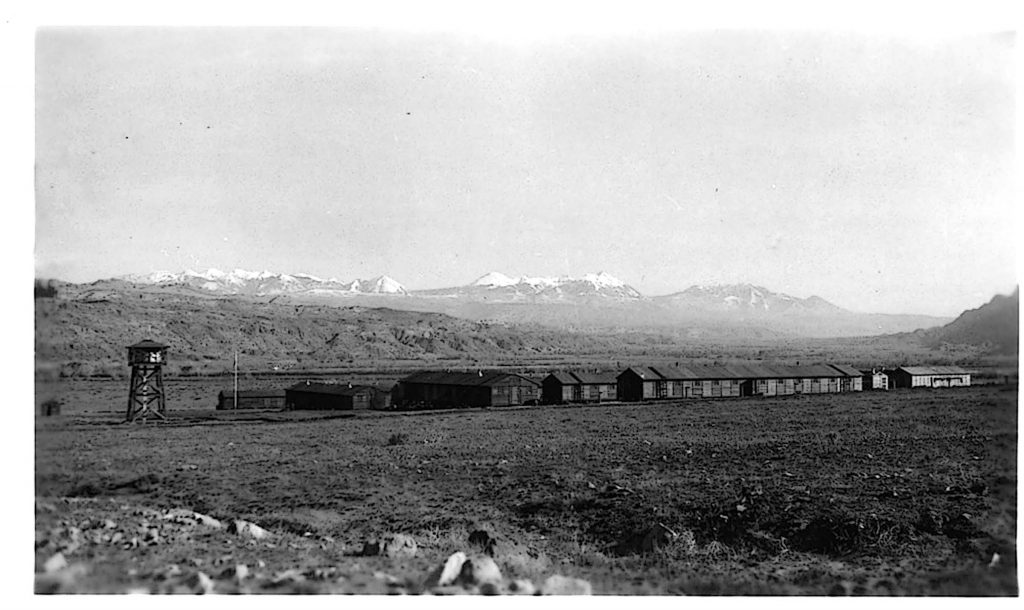
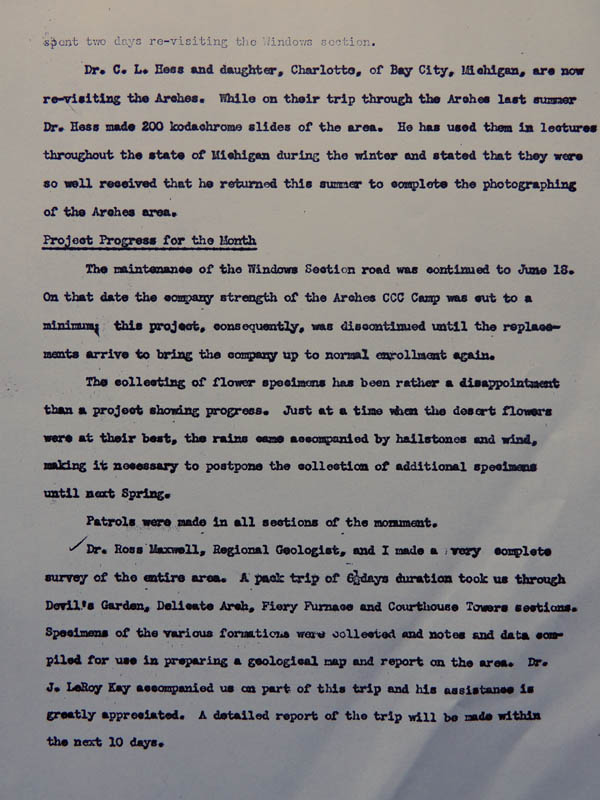
Projects for the Ensuing Month
As much time as possible will be spent in guide and contact work in the Windows section.
Attendance at the fire training school at Bryce Canyon National Park and report on the meetings.
Compilation of data and detailed report of geological survey of the monument.
Continued maintenance of the Windows Section road.
Due to the growing need for directional signs to the various points of interest in the Windows section, this project will be given sufficient time for completion during the month.
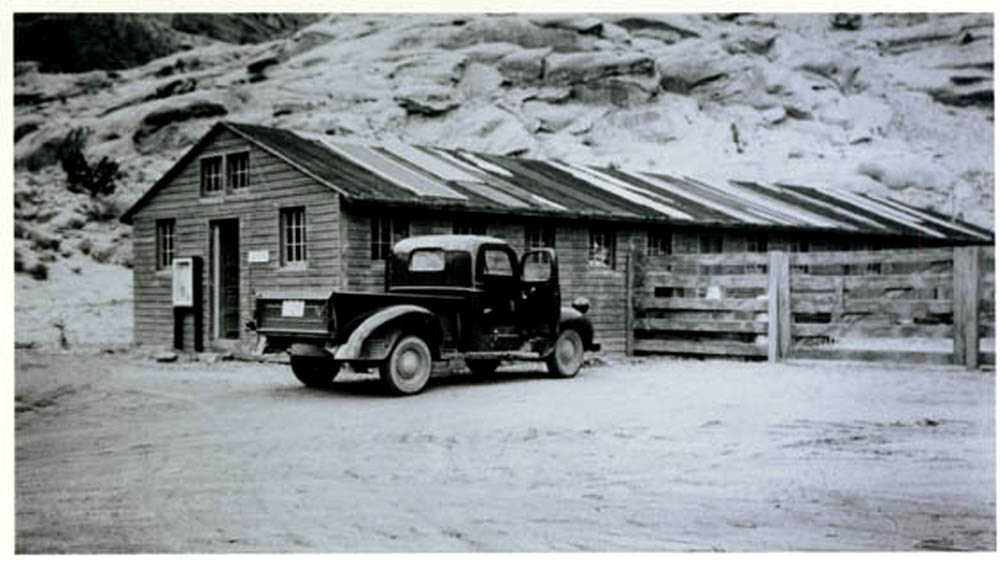
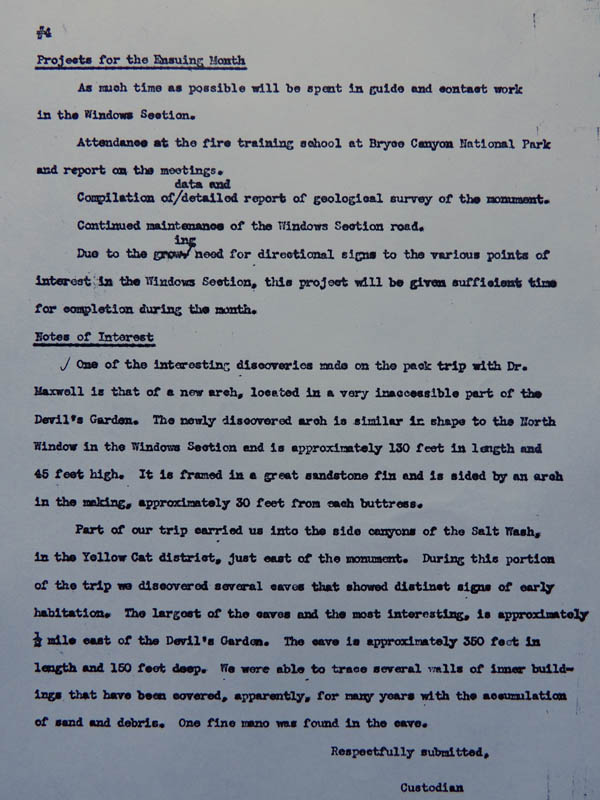
Notes of Interest
One of the interesting discoveries made on the pack trip with Dr. Maxwell is that of a new area, located in a very inaccessible part of the Devil’s Garden. The newly discovered arch is similar in shape to the North Window in the Windows Section and approximately 130 feet in length and 45 feet high. It is framed in a great sandstone fin and is sided by an arch in the making, approximately 30 feet from each buttress.
Part of our trip carried us into the side canyons of the Salt Wash, in the Yellow Cat district, just east of the monument. During this portion of the trip we discovered several caves that showed distinct signs of early habitation. The largest of the caves and the most interesting, is approximately ½ mile east of the Devil’s Garden. The cave is approximately 350 feet in length and 150 feet deep. We were able to trace several walls of inner buildings that have been covered, apparently, for many years with the accumulation of sand and debris. One fine mano was found in the cave.
Respectfully submitted,
Custodian
CLICK HERE TO READ THE PREVIOUS INSTALLMENTS OF HANK SCHMIDT’S MONTHLY REPORTS…
* NOTE: Thanks to former Arches NP superintendent Paul D. Guraedy, who gave me access in 1988 to the old monthly reports…JS
To comment, scroll to the bottom of the page.
Zephyr Policy: REAL NAMES ONLY on Comments!
Don’t forget the Zephyr ads! All links are hot!

